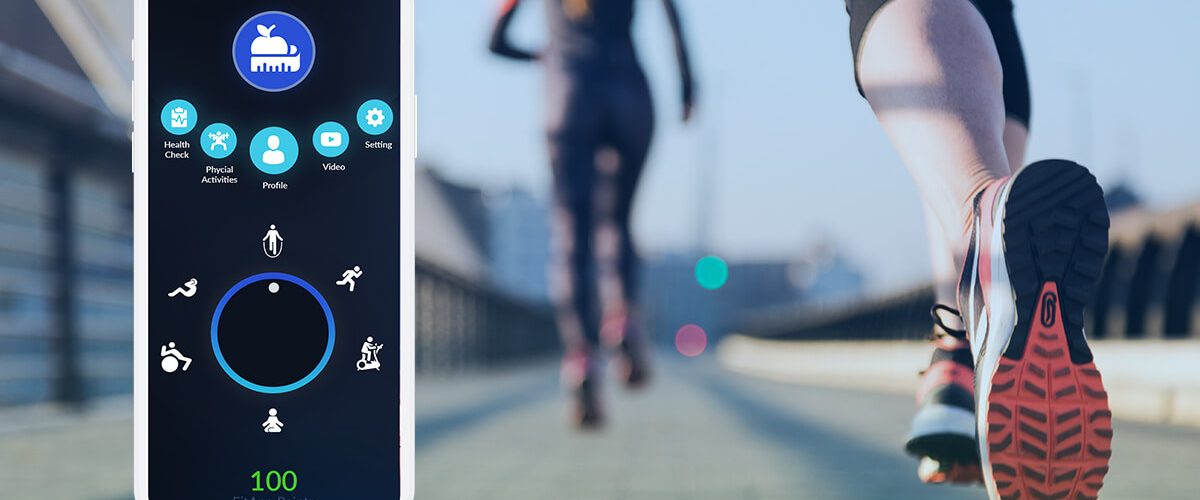How to Create a Fitness App: A Comprehensive Guide

Fitness App Development has made quality training more accessible. Wellness apps that include nutrition, lifestyle, and activity tracking are available. Many apps can achieve unprecedented levels of personalization thanks to AI.
What is the impact on market figures?
The fitness app industry is growing at a rapid pace. Statista reports that the number of users for paid and free fitness applications has risen similarly since 2017. By 2027, they are expected to reach 970 million active users. Users are willing to pay for certain features, as they work. The fitness app is an effective, goal-oriented, and long-term partner for modern people. This includes those in the digital-first generation Z (30% audience).
Why Create a Fitness App
In general, developing a fitness application is a rewarding and lucrative opportunity for developers and businesses looking to tap into the increasing demand for health and well-being products and services. It is smart to build a fitness application for several reasons.
High Expected Revenue
App developers can expect to earn significant revenues from the global fitness app market, which is predicted to reach $19.33 Billion by 2029. App owners can also target B2B as well as B2C markets by using appropriate pricing plans.
Guaranteed Customer Loyalty
Fitness app users who are regulars will probably stick with the app and recommend it to other people, leading to an increasing user base. Contrary to popular belief, fitness apps are not only for people who went to the gym before the pandemic. Online sports are appealing to those who may be reluctant to use offline facilities due to various reasons. Online fitness apps allow everyone to participate in sports at any time, anywhere, and without feeling social pressure.
The motivation to exercise has changed. People are turning to physical activity as a way to combat depression, anxiety, and obesity. Since 2020, millions of people have been helped by the support and care offered by their favorite app.
Strong Branding Opportunities
Stable customer bases organically build substantial brand equity. The business model focuses on the regularity of users and their achievements, which form durable perceptions, associations, preferences, and an overall positive brand experience.
Achieving Competitive Advantage
Well-designed fitness apps with lots of features can give your business a competitive edge. There are many competitor apps, which means that the research opportunities are vast. An intelligent approach to competitor and audience analyses will reveal what users are missing in existing apps, and help find the product-market fit.
Data-Driven business model
Fitness apps can provide useful data on user behavior that can be used to improve features and target marketing efforts. The fitness startup analytics can take a lot from the game development approach and link app features with the users’ desire to reach new heights/levels.
The data-driven approach also opens up more opportunities for personalization. Well-trained algorithms can generate training paths, diets, and lifestyle suggestions for individuals based on their affinities, past activity, and successes.
Growing Demand
Fitness is a rapidly growing industry, as we’ve mentioned. More people are looking for ways to improve health and well-being. Fitness apps and similar tech business models that offer users convenient access to workouts, nutrition advice, and activity tracking are in high demand.
As the demand for fitness apps grows, the market becomes less competitive.
Types of Fitness Apps
Fitness apps are available in many different types, each focusing on a specific aspect of health and fitness. Fitness apps are available in many different types.
Workout apps:
Apps for workouts provide users with plans and routines to achieve various fitness goals such as weight loss, muscle-building, and endurance training. These apps may include features such as video demonstrations, progress tracking, timers, and even timers. Sweat, an app that allows women to exercise, is a great example of a well-designed app.
Nutrition and diet apps:
Apps that track calorie intake and macronutrient ratios are available to users. They also provide recipes and meal plans for a healthy lifestyle. Apps like YAZIO invite users to take part in challenges that make their journey to better health more fun.
Activity-tracking apps:
Apps that track daily activity use sensors on smartphones and wearable devices. They can monitor steps, distance traveled, and calories burned. The iOS Health app, although many fitness apps have the feature available, is the most popular.
Yoga and meditation apps:
Apps that offer yoga and meditation include guided meditation, mindfulness exercises, and relaxation techniques. They can help you reduce stress and promote mental health. Calm is a good example. It has both individual and business plans.
Running apps:
Running apps can track distance, time, and speed. It app offers training plans and audio coaching to users to reach their goals. Strava is a great place to start.
Personal trainer apps:
Personal trainer apps offer personalized workout plans, and personal coaching by certified trainers via video chat or in person. The Future app intelligent quiz matches you with the right coach based on your training goals.
Virtual fitness class apps:
Apps for virtual fitness classes give you access to pre-recorded and live fitness classes, including dance, barre, and pilates. Nike Training Club offers a wide range of workouts that can be done at home.
Dancing apps:
Dancing apps can be used to improve fitness in a variety of ways. These apps have given millions of people access to workshops and learning pathways designed by their favorite global influencers. Now, anyone can get training from any YouTube crew or dancer. Steezy is a good example.
Wellness and health apps:
Apps for health and wellness offer holistic approaches, with features such as sleep tracking, stress management, and habit tracking. Feel Better, for example, allows users to improve their sleep habits and mindfulness with its Feel Better app.
Here are just some of the fitness apps that exist today. Each type has several segments such as dance styles (high heels or popping), diet options, (vegan or animal-based), workouts, (CrossFit or Bodybuilding), etc. Each segment should have its app, to ensure a comprehensive user experience.
Technology is the key to spreading inspiration. Prepare yourself to consider the best technological solution and the essential features of the app. Before you start creating a fitness application, learn more about the stack available.
Common Features of Fitness Apps and Tech Stack
Fitness app development has existed for some time, and certain trends apply to the feature sets and technology stacks of these apps. Let’s look at the typical components of a fitness application.
Common Features of Fitness Apps
We can infer from the variety of fitness apps that each one has its unique features. There is a list of basic features that are recommended for every unique service.
- Registration and log-in using popular methods of authorization (social, email)
- A personal profile containing information on age, gender, and weight;
- Workout routines and plans with instructional videos
- Tracking and Analytics to collect valuable data and generate insights
- Integrate with fitness trackers and wearables
- Reminders and push notifications to encourage users to complete their goals.
- Celebrate your results with others by using social-sharing and community features.
- Planning your nutrition and meals is a vital part of maintaining wellness.
- Integration with third-party services like Apple Health or Google Fit
- Purchase premium features or content through in-app purchases.
A good thing about the competition is that several companies have tested different technologies. You can now start with the development of a fitness application and consider any technological failures. Prioritize features and start with quality and appropriate stack.
How to create a fitness app: Seven stages
It can be difficult to create a fitness application, but breaking the process down into phases makes it easier. How to create a fitness application can be broken down into seven steps.
Stage 1: Idea Validation
MVP validation is crucial before you begin building your fitness application. This involves analyzing the market, identifying the target audience, and evaluating the competition.
- Who would you like to see using your app?
- What are the fitness goals and preferences of your clients?
- What is the best feature in the app of the main competitor?
This information can help you create an app that is tailored to their needs, and also develop a unique proposition of value to distinguish your app from the competition.
Create a budget for app development and define the core features and functionality of your app. Keep in mind, at this stage, that MVP development is based on the assumption that the most important features are launched first before any full-scale development begins.
Stage 2: Design
You’ll then need to design your app’s user interface and experience. This involves developing wireframes, a visual design, and mapping out the journey of the user.
Determine the features that you would like to have in your app. You might want to include features like workout plans, progress tracking, and nutrition advice, as well as social sharing and integration with fitness trackers and wearables. In the first mockups, reflect them all. This is a great way to check for errors in the user flow before coding.
Stage 3: Development
It is important to create a vision for the fitness app before moving on to development. The development phase involves the front-end, back-end, and integration of APIs and SDKs. Select the technology stack that you will use to create the app. Refer to the table.
Stage 4: Testing
You’ll have to test the app once it’s built to make sure it’s secure, stable, and user-friendly. This includes checking for bugs, performance problems, and glitches that can make a fitness application difficult to use. When it comes to payment security, don’t forget.
Stage 5: Launch
It’s now time to launch your app after the testing phase. This involves submitting the app to the stores and making sure it meets their requirements.
Stage 6: Marketing
Start marketing your app to your audience after launching it. This includes optimizing app store listings, creating a marketing plan, and using different marketing channels to promote the app.
Stage 7: Maintenance
It’s important to update and maintain the app as time goes on. This involves adding new features and fixing bugs, as well as keeping the app updated with the latest technology. Monitor feedback from users and usage data to identify problems and areas of improvement. This will keep users engaged and enhance the user experience.
Here are seven important stages you should consider when developing a fitness application. It is important to remember that a successful fitness application requires dedication, hard work, and attention. Understanding your target audience, the market competition and the features you want to include in the MVP is the most important thing before fitness app development.
Are you planning to create a fitness app?
A fitness app is a great way to tap into an expanding market. It is still important to conduct thorough research to determine user needs and distinguish your app from other solutions.
The success of any fitness app depends on its user experience and value. Invest in mobile app development services, which include consultations to determine how best to create a fitness application that is both user-friendly and incorporates the latest technology.


